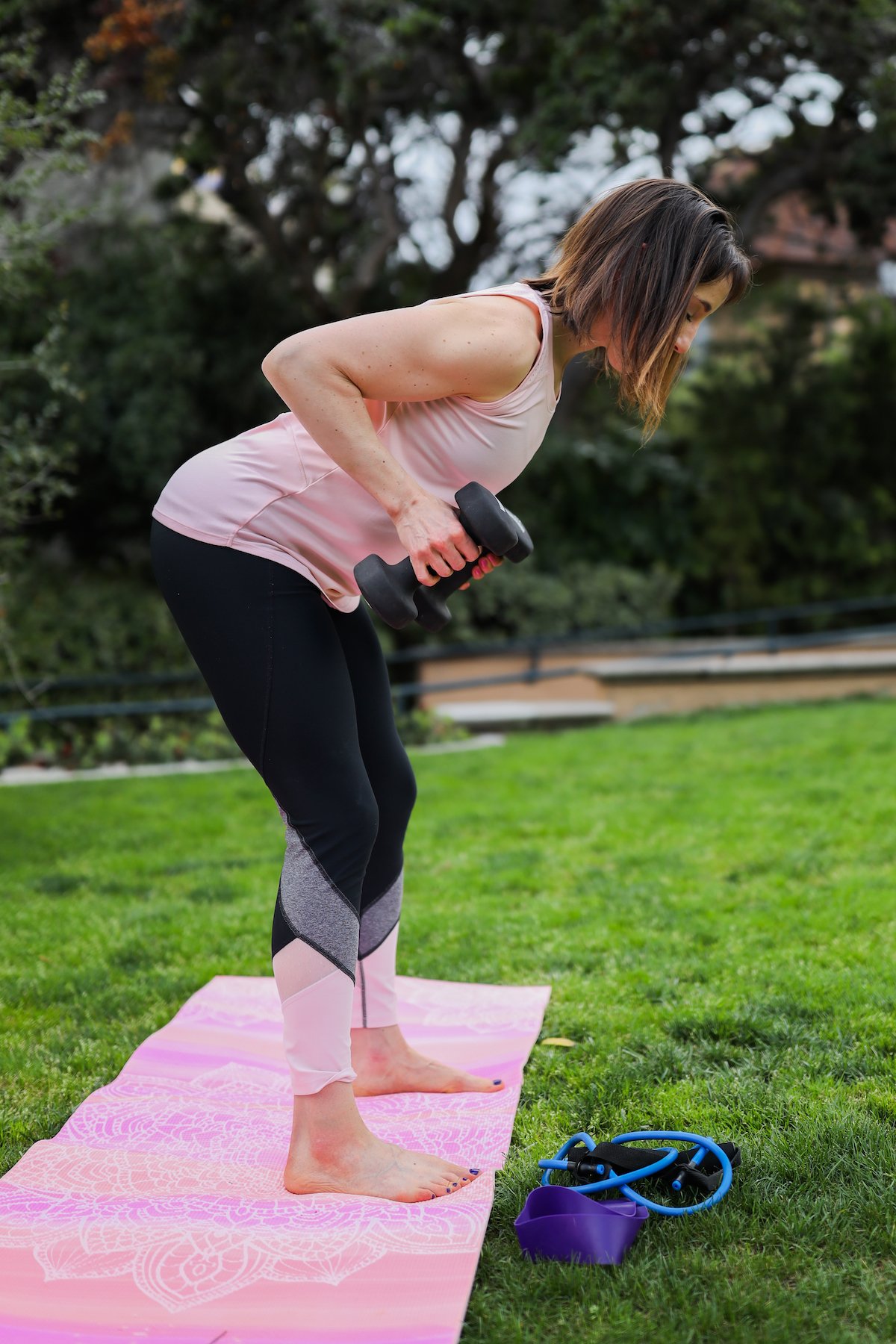5 Drills to Master your Hip Hinge
Master your Deadlift
Why should all moms learn to hip hinge and deadlift? As a mom there are a few things I do everyday, one of which is bend over to pick up things off the ground. Whether it's toy cars or a screaming toddler I find myself hinging a lot.Learning how to hip hinge will help with low back discomfort and keep your spine safe as you continue to bend over throughout your day. The discs in our back don't love repetitive forward bending, especially when picking up something heavy. Preventing injury starts with awareness and learning the fundamentals. We don't need a ton of equipment or a gym to get started hinging, and ultimately - deadlifting with heavy weight.
5 Drills to Master your Hip Hinge and Move Like a Mom Boss
Before we pick up the weight I love to work through five hip hinging drills with clients. The goal? Unclench the glutes, learn to send the hips back (length through the glutes), master a neutral pelvis and find movement with limited spinal movement, and keep your back safe. Let's get started!
1.Butt Back / Tap the Wall: The focus here is on shifting your hips back as you bend. Stand about 6-10 inches away from the wall and hinge forward. Imagine you're closing a car door behind you or loading a dishwasher. Your hips should move backwards and you feel your glutes lengthen and your glutes and hamstrings working to generate tension.
2. Dowel / PVC Pipe Hinge: Focus here on keeping a neutral spine and maintaining contact with the PVC pipe. I find this drill also helps from going too far/rounding forward.
3. Chair/Bench for feedback: Focus here on keeping shins vertical
4. Hand on belly/back: I love this for feedback. Here we are feeling for any movement in the spine. Can we hinge without moving into an anterior tilt? Do we tuck under / clench?
Anterior Tilt = hyperextension in the spine
Posterior Tilt = flexion - rounded back
5. Squeeze something with your armpits: this helps keep those shoulders back, fires up the lats, and keeps us from rounding forward. I usually cue clients to pretend they're holding on to $100 bills.
Put it all together! Once you've mastered bodyweight you can start adding weight or experiment with banded resistance. As a reminder, in a deadlift we are looking to feel and load the butt and hamstrings, NOT the low back.
Bonus tip: If you do not feel comfortable in standing just yet we can also work on the hinge by performing a quadruped rockback.
If you’re early postpartum, head over to my FREE Guide where I walk you through an introductory hinge movement for the first 6 weeks postpartum.
Feel good mama!
xoxo,
Erica


